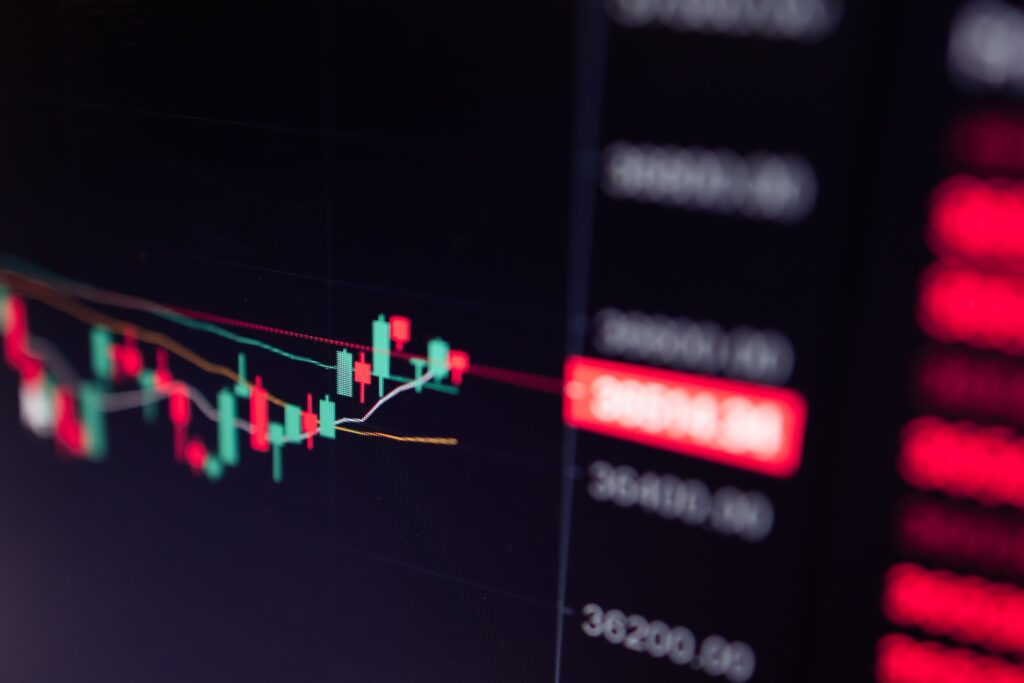Trading interest rates is a fundamental aspect of the financial markets, allowing investors to speculate on the future movements of interest rates. This form of trading is crucial for managing risk and optimizing investment strategies in the face of economic changes.
- Key Takeaways:
- Trading interest rates involves speculating on the future movements of interest rates.
- It is integral for managing risk and optimizing investment strategies.
- Various financial instruments like bonds, futures, and swaps are used in interest rate trading.
- Central banks play a pivotal role in influencing interest rates.
- Understanding the economic indicators is crucial for successful trading.
Understanding the Basics of Interest Rate Trading
What is Interest Rate Trading?
Interest rate trading involves speculating on the future value of interest rates, allowing traders to profit from their movements. Interest rates are a fundamental economic indicator, reflecting the cost of borrowing money. They are determined by central banks and are influenced by various economic factors, including inflation, economic growth, and unemployment rates.
Why Trade Interest Rates?
Trading interest rates is essential for several reasons. It allows investors to hedge against the risk of interest rate fluctuations, which can significantly impact the value of their investments. Additionally, it provides opportunities for speculating on economic conditions and earning profits from accurate predictions.
Instruments for Trading Interest Rates
Bonds
Bonds are debt securities that pay periodic interest to bondholders. The price of a bond is inversely related to the prevailing interest rate. When interest rates rise, bond prices fall, and vice versa. Therefore, trading bonds is a common method for speculating on interest rate movements. For beginners looking to invest, understanding investment options is crucial.
Interest Rate Futures
Interest rate futures are standardized contracts that trade on exchanges. They allow traders to speculate on the future level of interest rates. These futures contracts are derived from underlying financial instruments such as government bonds or money market instruments.
Interest Rate Swaps
Interest rate swaps are over-the-counter contracts between two parties agreeing to exchange interest payments. One party pays a fixed interest rate, while the other pays a floating rate. Swaps are used to hedge against interest rate risk or to speculate on interest rate movements.
Role of Central Banks in Interest Rates
Central banks, such as the Federal Reserve in the United States, play a pivotal role in determining interest rates. They set the benchmark interest rates, influencing the cost of borrowing and the return on savings. Central banks use interest rates as a tool to control monetary policy, manage inflation, and stabilize the economy.
Monetary Policy and Economic Indicators
Understanding the monetary policy and economic indicators is crucial for trading interest rates successfully. Traders need to monitor economic data releases, such as GDP growth, unemployment rates, and inflation, to make informed decisions on interest rate movements. Knowing the best trading indicators can significantly enhance trading strategies.

Strategies for Trading Interest Rates
Analyzing Economic Data
Analyzing economic data is a fundamental strategy for trading interest rates. Traders scrutinize economic reports and indicators to gauge the economic health and predict the central banks’ next moves. Accurate analysis can lead to profitable trading opportunities.
Diversification
Diversification involves allocating investments across various financial instruments to reduce risk. By diversifying their portfolio, traders can mitigate the impact of adverse interest rate movements on their investments.
Practical Application of Interest Rate Trading
Trading interest rates can be applied practically through various financial instruments. For instance, a trader anticipating a rise in interest rates might short-sell bonds, expecting their prices to fall. Similarly, a trader expecting a decline in interest rates might enter into an interest rate swap to receive fixed interest payments. For more insights on trading, you can explore share trading on BrokerExtra.
Tables with Relevant Facts
|
Central Bank |
Benchmark Interest Rate |
Last Change |
|---|---|---|
|
Federal Reserve (USA) |
0.25% |
March 2023 |
|
European Central Bank (EU) |
0.00% |
July 2022 |
|
Bank of England (UK) |
0.75% |
June 2023 |
|
Bank of Japan (JP) |
-0.10% |
January 2023 |
The Impact of Economic Indicators on Interest Rates
Inflation and Interest Rates
Inflation is a key economic indicator that significantly impacts interest rates. When inflation is high, central banks may raise interest rates to curb spending and inflationary pressures. Conversely, during periods of low inflation, central banks might lower interest rates to stimulate economic activity and spending.
Unemployment Rates
Unemployment rates are another crucial economic indicator. High unemployment rates can lead to lower interest rates as central banks aim to stimulate economic growth and job creation. On the other hand, low unemployment rates might prompt central banks to raise interest rates to prevent the economy from overheating.
Risks Involved in Trading Interest Rates
Market Risk
Market risk refers to the risk of losing investments due to market movements. In interest rate trading, market risk is prevalent, as interest rates can be volatile and influenced by various economic and geopolitical factors.
Liquidity Risk
Liquidity risk is the risk associated with the inability to execute trades at desired prices due to a lack of market participants. In interest rate markets, liquidity can vary, impacting the ease with which traders can enter or exit positions.
Advanced Strategies for Trading Interest Rates
Spread Trading
Spread trading involves purchasing one asset while simultaneously selling another related asset. In interest rate markets, traders might engage in spread trading by exploiting the differences in interest rates between two different financial instruments.
Carry Trade
Carry trade is a strategy where traders borrow in a currency with a low-interest rate and use the funds to invest in a currency with a higher interest rate. This strategy can be profitable if the exchange rate between the two currencies remains stable.

